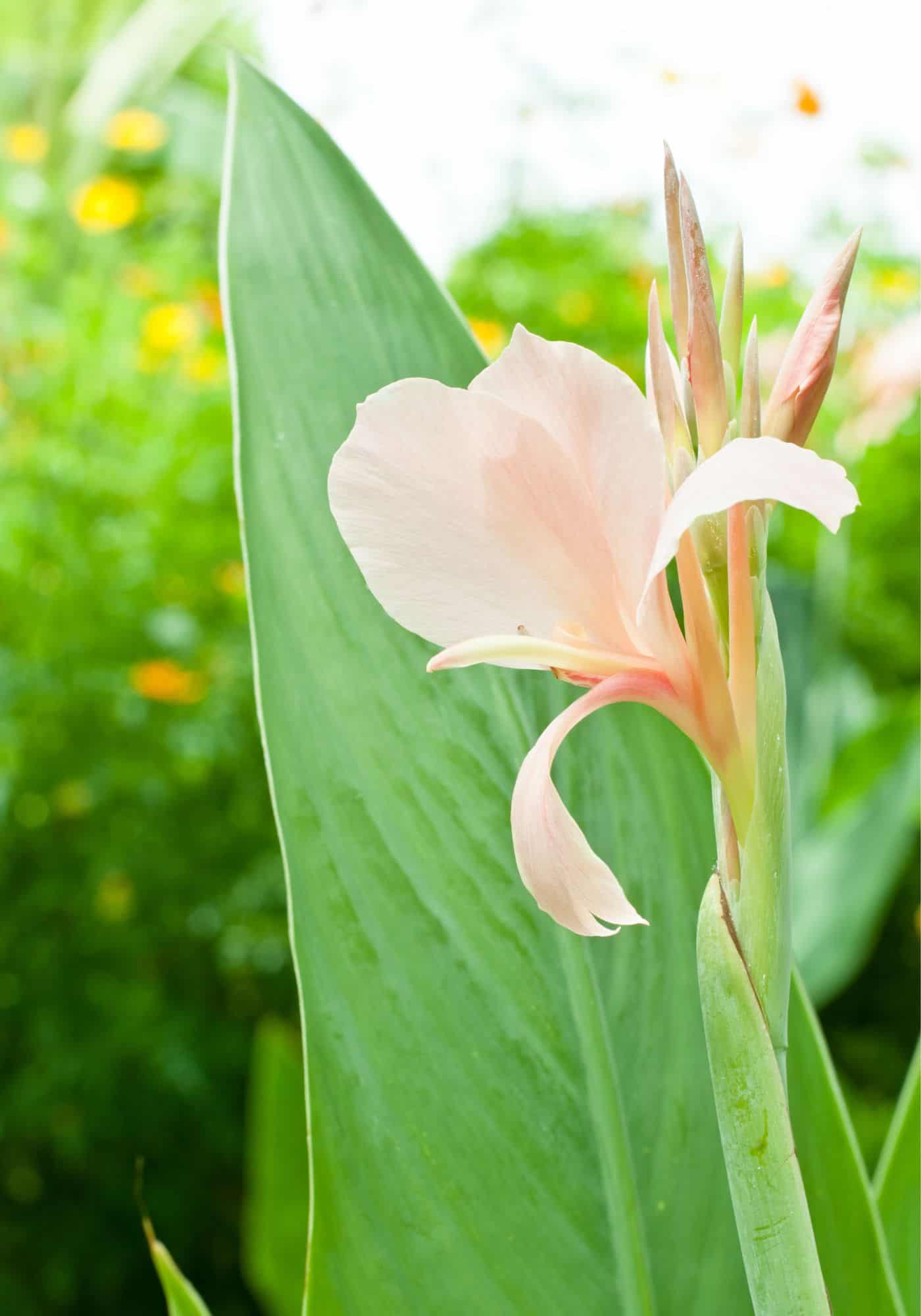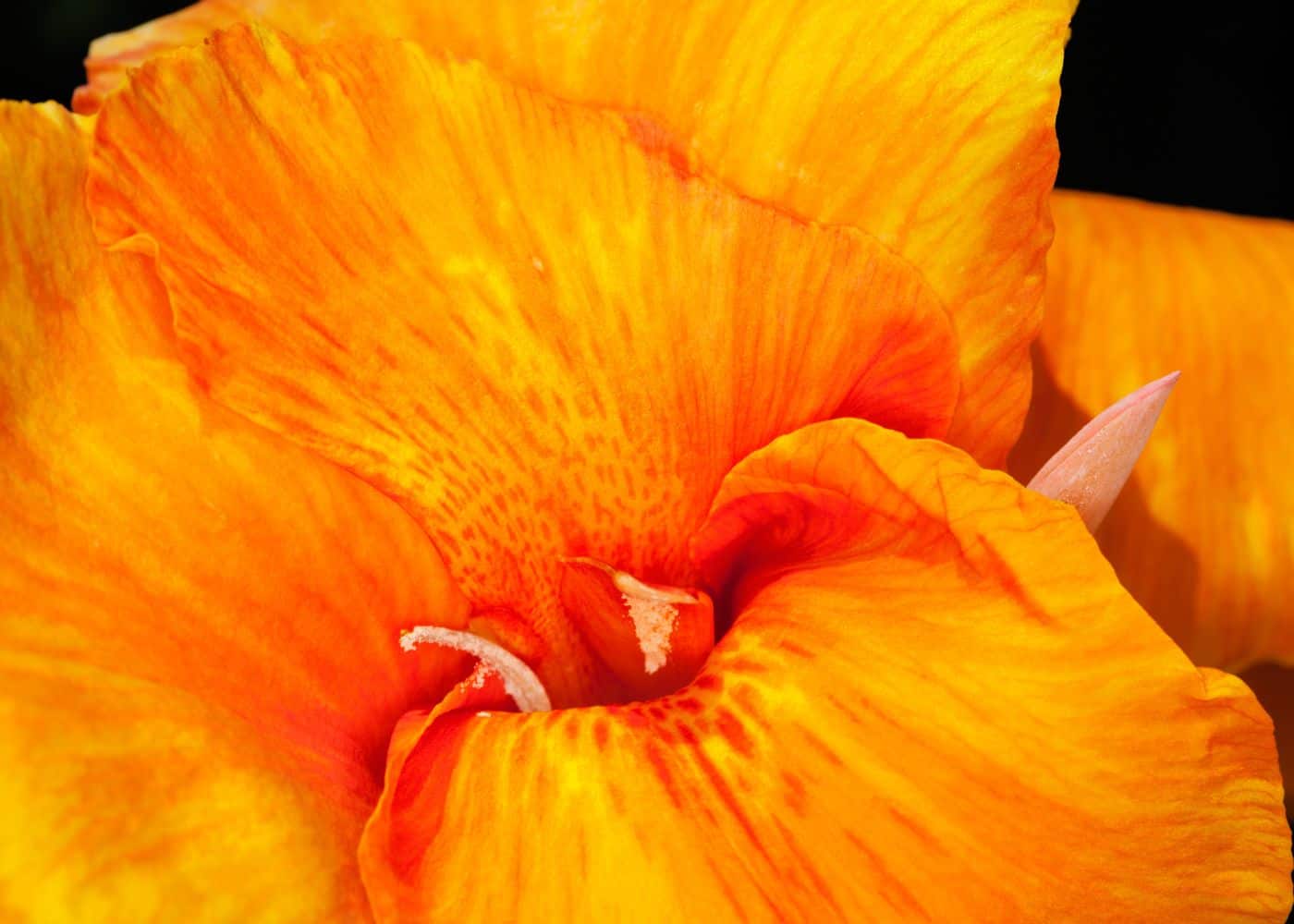Canna lilies are flowering plants known for their large, colorful flowers and tropical appearance. People typically grow canna lilies in gardens and as potted plants, often using them as a focal point in mixed beds or borders.
The canna lily (Canna bangii) is a herbaceous perennial plant known for its broad upright green leaves and bright, colorful flowers. They can be planted in full sun or partial shade and prefer well-drained soil. Canna lilies are popular among gardeners because they are relatively easy to grow, and their bright and showy blooms provide a bold, tropical touch to a garden.
An introduction to canna lilies
Canna is a genus of flowering plants in the family Cannaceae. These beautiful species are native to tropical and subtropical regions of the Americas (Bolivia, Peru) and are known for their large, colorful flowers and tropical appearance. Cannas are known for being easy to grow and low-maintenance in the garden.
Canna lilies, though bearing the name ‘lily,’ are not true lilies. Unlike true lilies, which belong to the genus Lilium, canna lilies are part of the Cannaceae family. This distinction is important because it reflects major differences in their botanical structure and care requirements. True lilies grow from bulbs and have a different floral structure, while canna lilies grow from rhizomes and feature broader leaves and a more tropical appearance.
Canna lilies come in various colors, such as red, orange, yellow, and pink. Additionally, their attractive foliage is often used to add a lush look to landscapes and can be used as background plants in the garden. Some canna lily leaves can reach up to three feet long and can come in shades of green, bronze, and even burgundy. There are even variegated cultivars available. Cannas are also popular as cut flowers, adding a tropical flair to bouquets and flower arrangements.
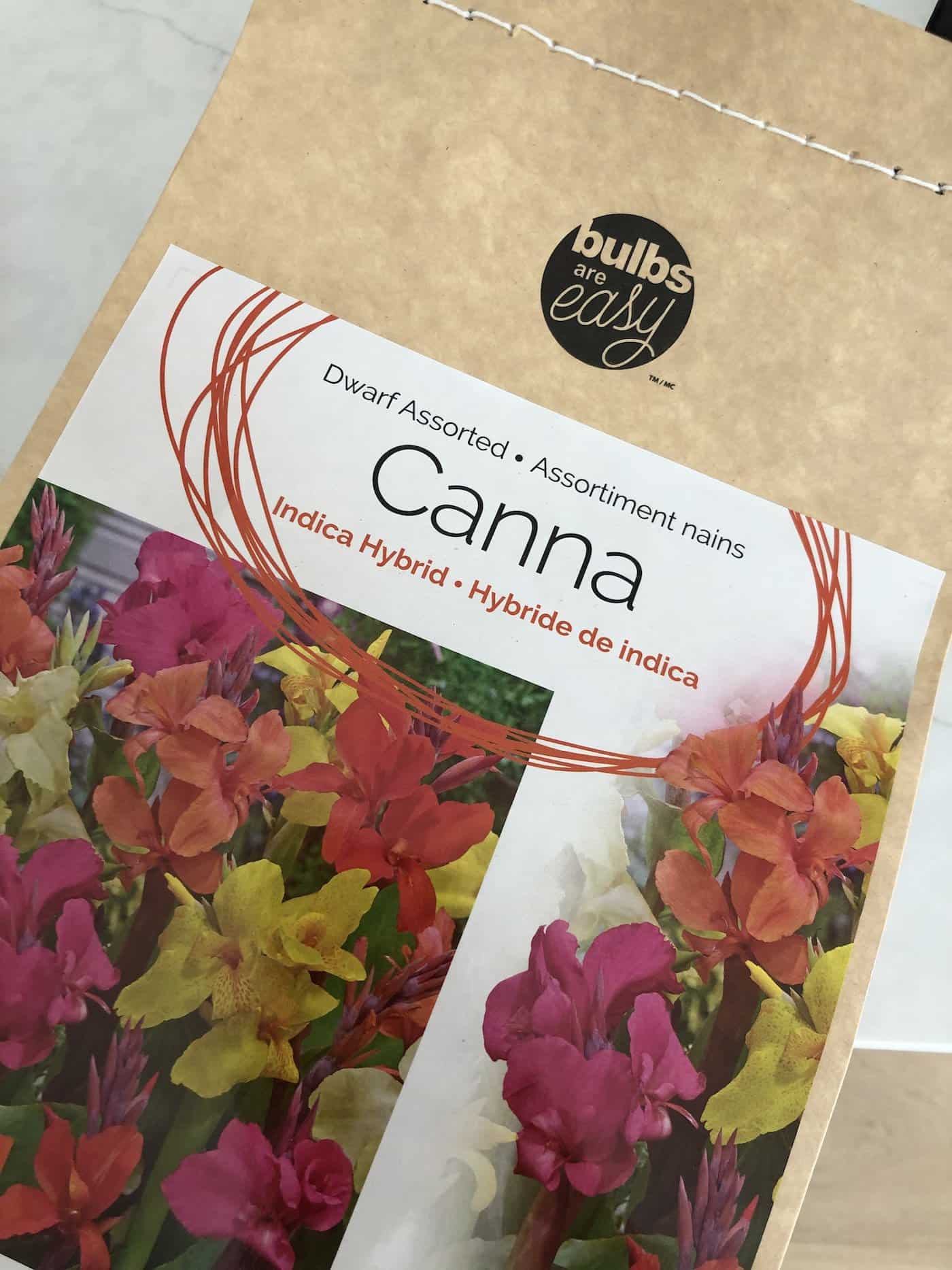
How to plant canna lilies
Let’s go over everything you need to know about how to plant canna lilies, including when to plant them, where to plant them, and how to care for them after planting.
When to plant cannas
The best time to plant canna lilies is in the spring or early summer when the soil is warm and the threat of frost has passed. If you live in a warm climate without frost or freezing weather, you can plant canna lilies in the fall as well.
Where to plant canna lilies
Canna lilies prefer full sun but are tolerant of partial shade. Make sure to plant your canna lilies in a spot where they will receive at least six hours of direct sunlight per day if you can. They will grow in most soil types, but they do best in well-drained soil that is rich in organic matter.
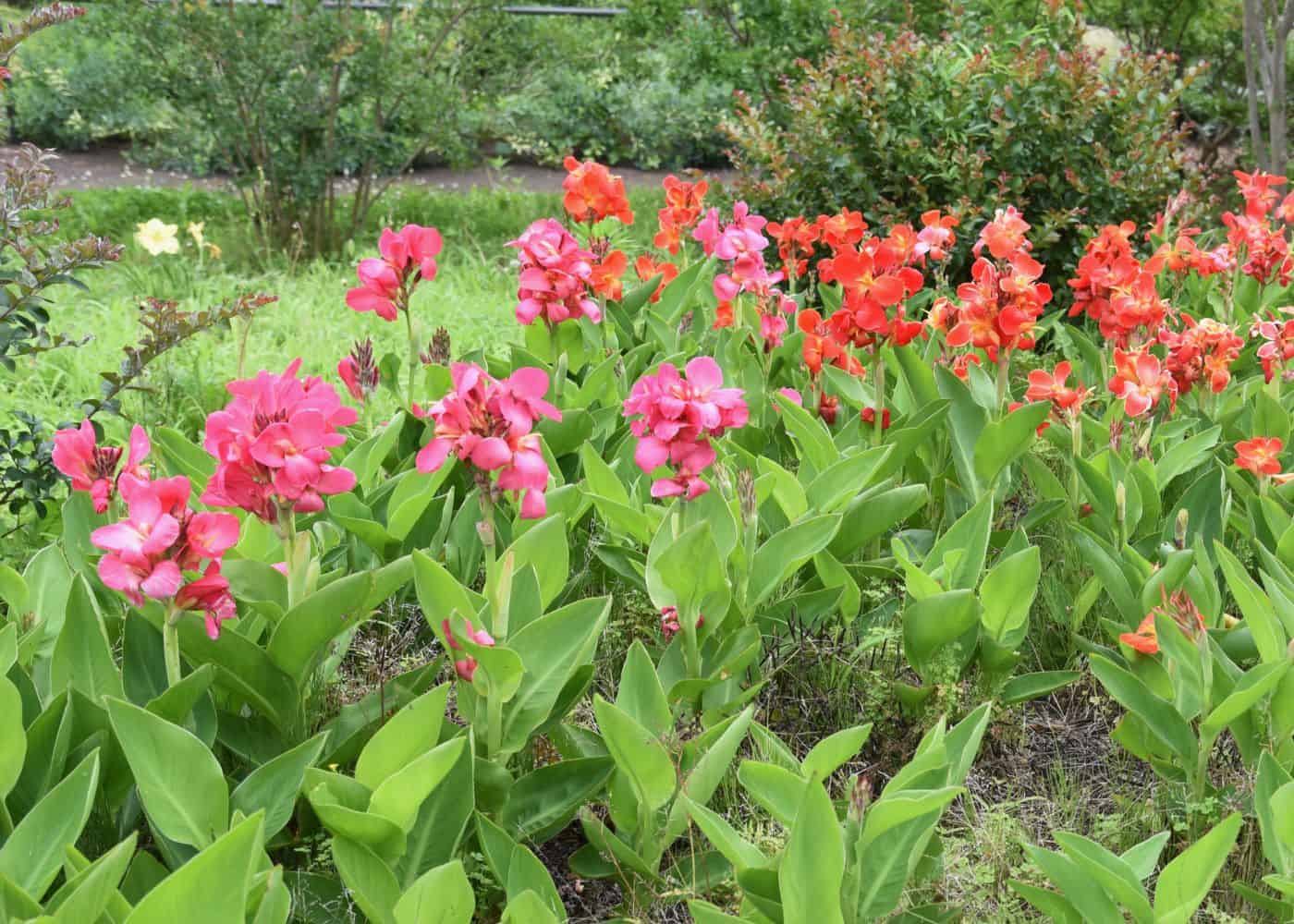
How to plant canna lily roots in the spring
To plant canna lily roots in the spring, follow these steps:
- First, prepare the planting area by removing any weeds, plant debris, or rocks and loosening the soil to a depth of about 12 inches. Make sure the soil is well-drained and rich in organic matter if possible. You can work compost into the entire planting bed if you like.
- Next, dig a hole that is slightly larger than the canna lily root. The hole should be deep enough so that the top of the root is just below the soil surface.
- Place the canna lily root in the shallow hole with the stem buds facing upwards if visible.
- Backfill the hole with soil and press down gently to remove large air pockets.
- Water the canna lily well after planting to settle the soil and remove any remaining air pockets.
- Keep soil consistently moist for the following weeks until the canna lily grows and establishes itself.
- Watch for new shoots to appear, usually within 2-4 weeks. Keep an eye on the soil moisture as the growing process goes on.
- Fertilize the plant with a balanced fertilizer once a month during the growing season to promote healthy growth.
It is important to note that Canna lilies are sensitive to frost, so you should wait till the risk of frost has passed before planting them. With proper care and attention, canna lilies should begin to grow and bloom within a few weeks of planting.
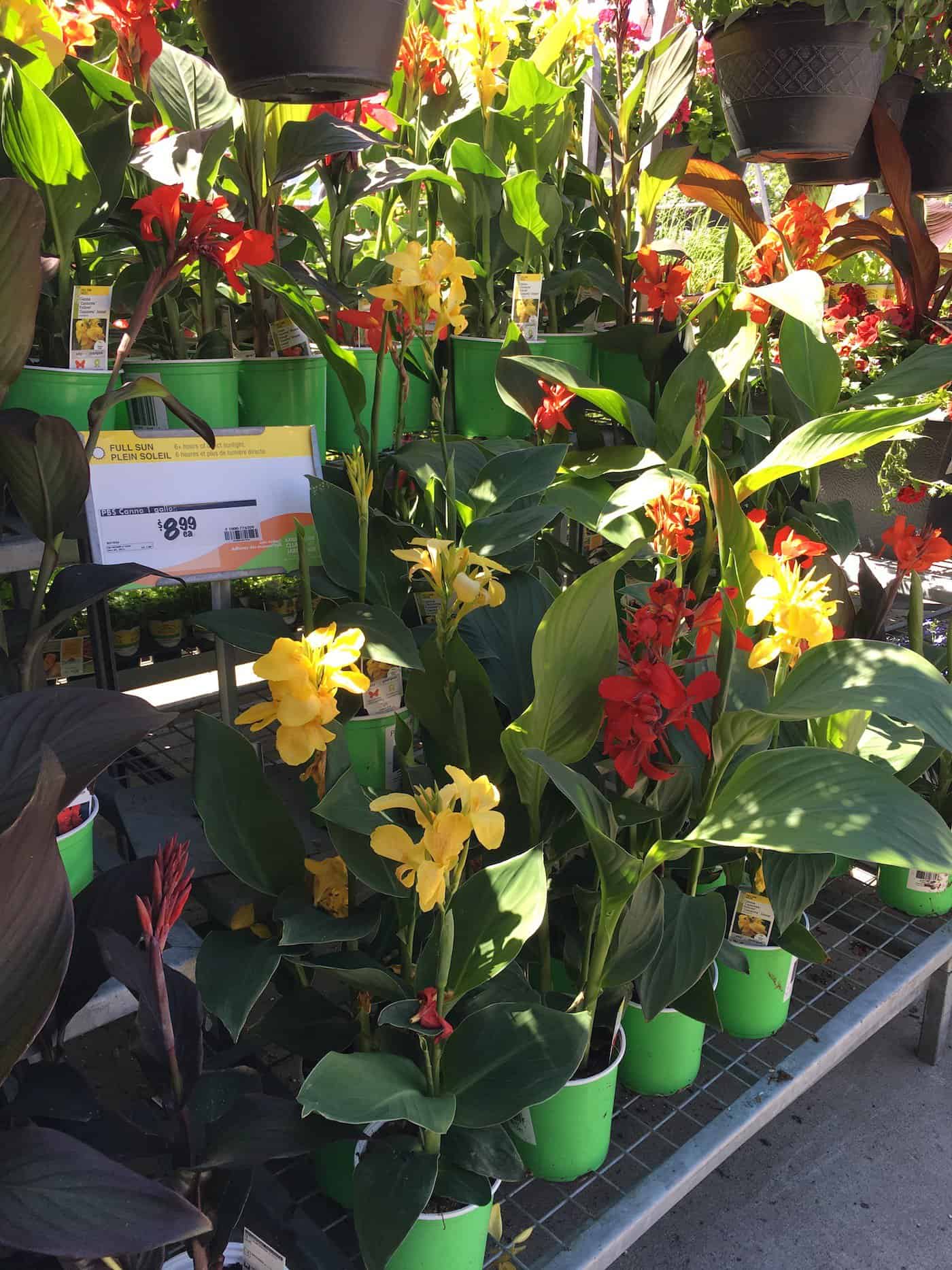
How to plant potted canna lilies
To plant potted canna lilies, you’ll need to prepare the garden bed soil by removing any debris or rocks. Make sure the soil is well-drained, as canna lilies do not like to be in soggy soil.
Next, dig a hole that is slightly larger than the rootball of your canna lily. Gently remove the canna lily from its container and loosen any tangled roots. Place the canna lily in the hole and backfill the soil around the rootball, making sure to press down gently to remove any air pockets. Water the canna lily well after planting.
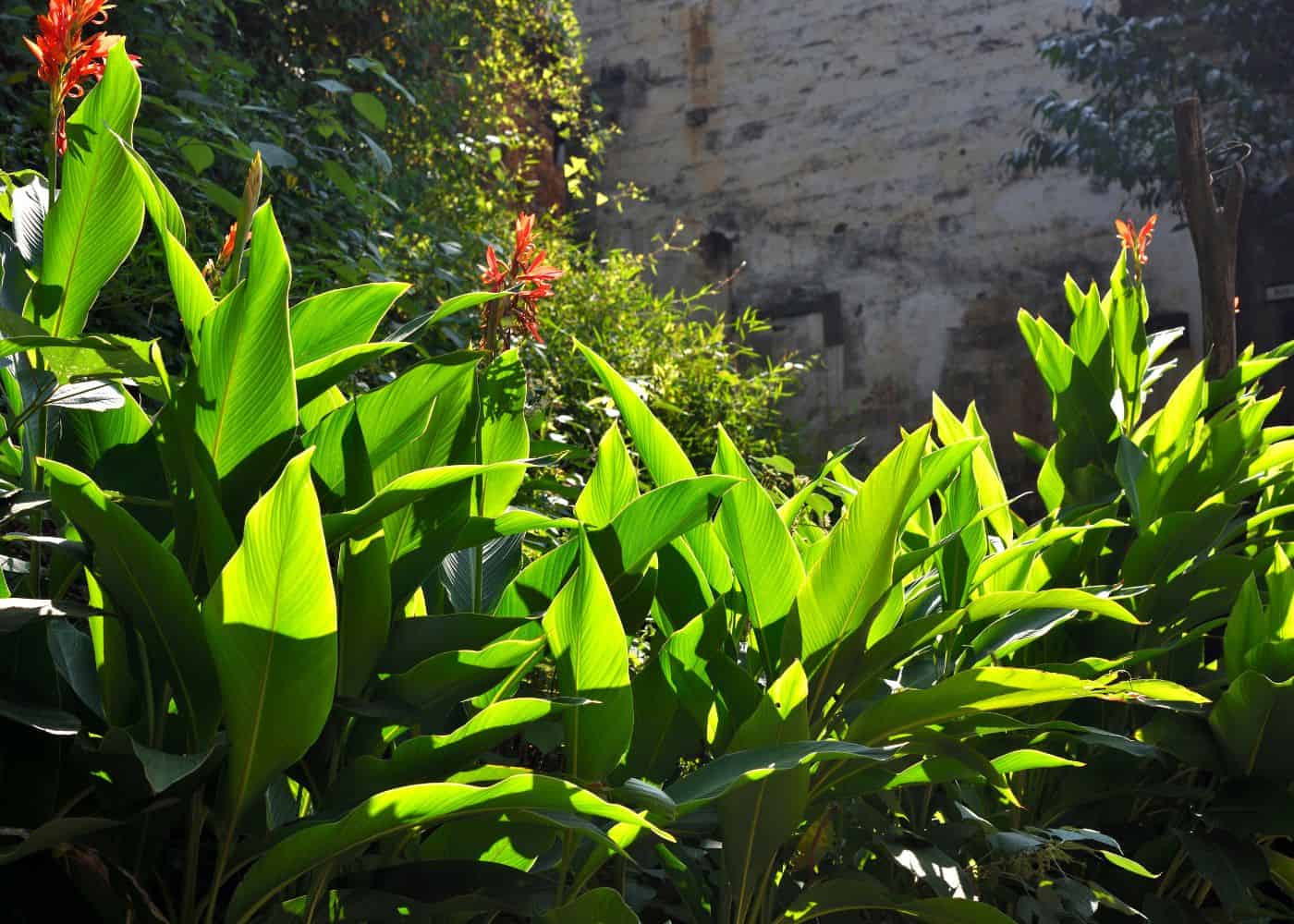
Plant care for canna lilies in the garden
Canna lilies are relatively low maintenance, but they do need regular watering to keep the soil consistently moist. During periods of hot, dry weather, you may need to water your canna lilies more frequently. In addition, fertilize your canna lilies with a balanced fertilizer about once a month during the growing season to promote healthy growth.
Remove dead flowers and foliage throughout the growing season to encourage new blooms. Once the canna leaves start yellowing, it is time to dig the rhizomes out of the soil and store them before frost. Canna lilies are generally stored indoors for the winter in climates that experience frost or freezing temperatures.
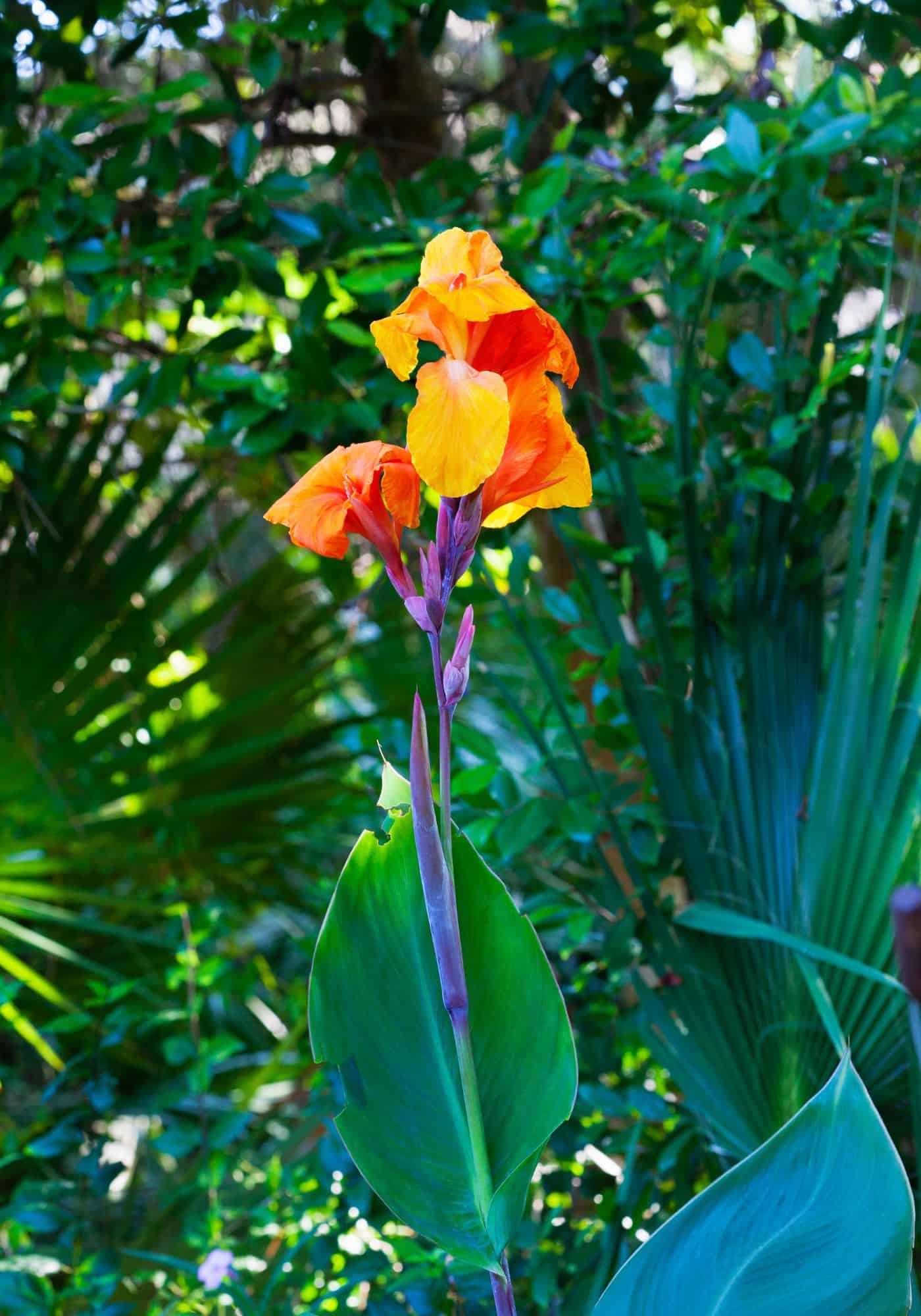
Watering tips
Canna lilies need consistent moisture and should be kept evenly moist but not waterlogged. They prefer to be kept in well-draining soil that has some water in it but not enough to be soggy.
During periods of hot or dry weather, they may need to be watered more frequently. It’s also a good idea to check the soil moisture level before watering to ensure the plants need water.
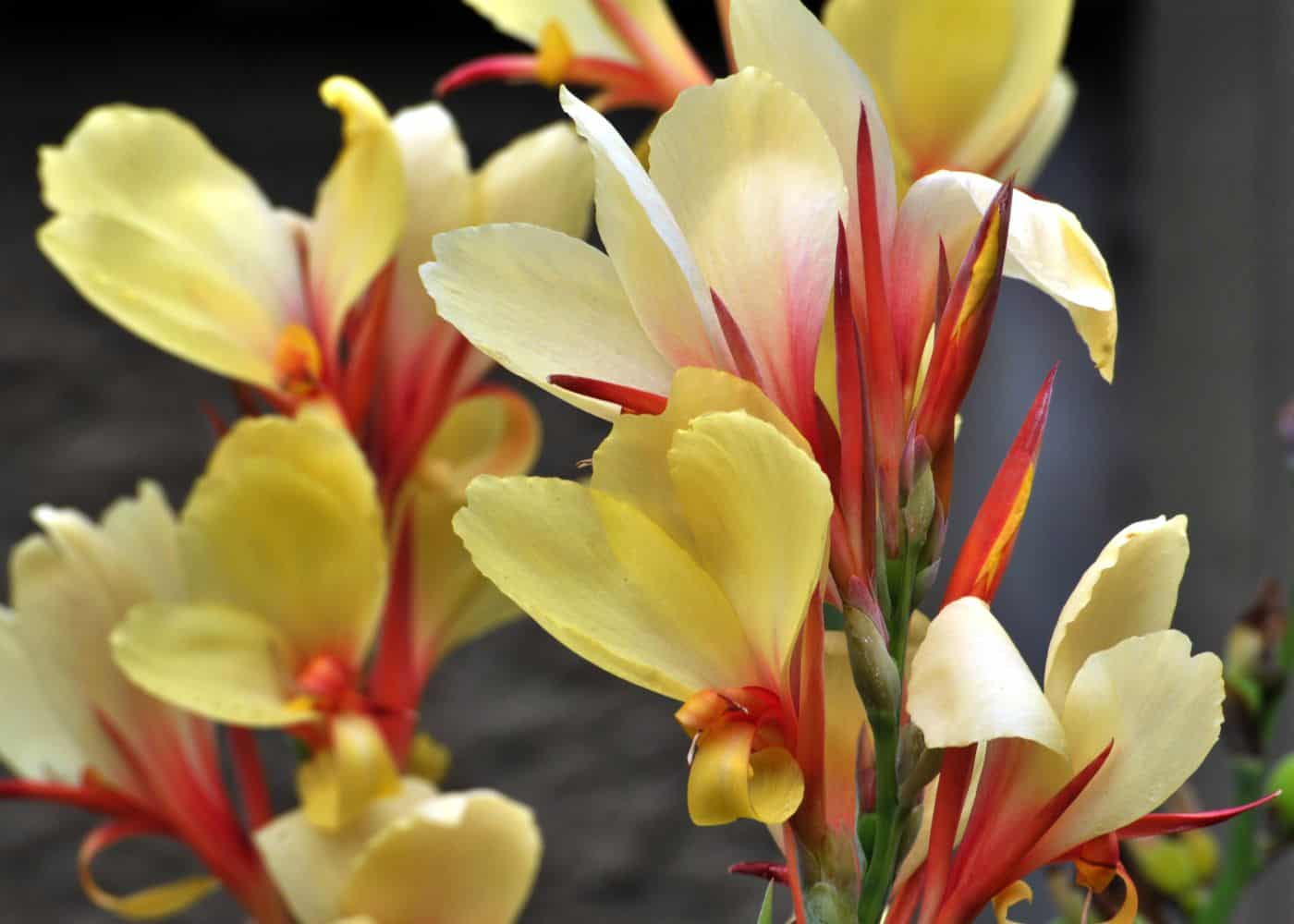
Sunlight requirements
Canna lilies need plenty of sunlight to thrive. They prefer full sun but can tolerate some partial shade. When planting canna lilies, make sure the area you choose gets at least four to six hours of direct sunlight per day if at all possible.
If canna lilies are grown in too much shade, they may not bloom as profusely or as well as in an area with more sunlight. But since their leaves are so lovely, that can work perfectly fine.
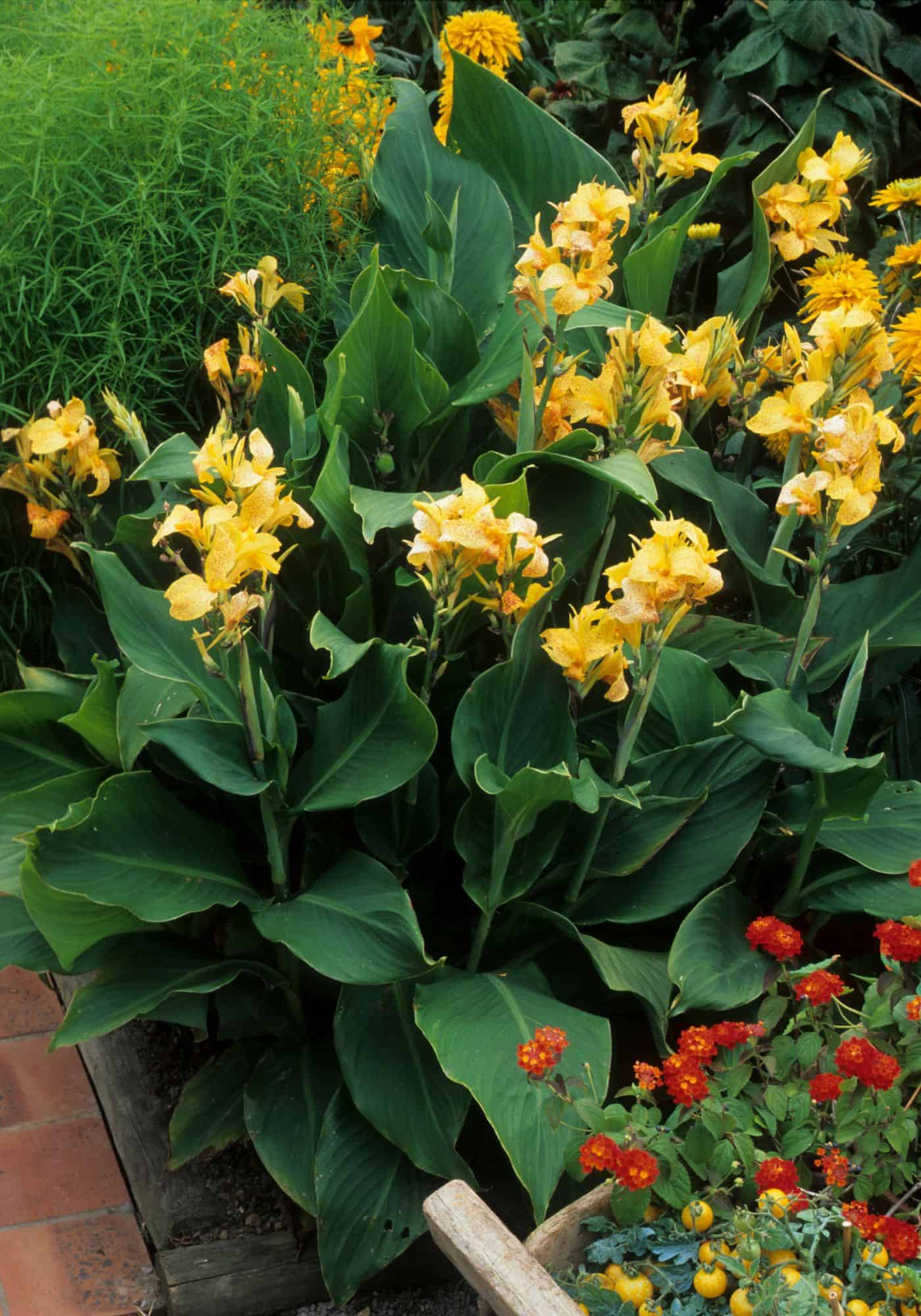
Mulching cannas
Canna lilies do well when the soil is mulched. Not only can mulching help to retain moisture in the soil, but it can also keep weeds at bay.
A few inches of organic matter such as compost, bark chips, or pine needles can be used as a mulch around canna lilies. Make sure not to pile the mulch directly against the plant stems to prevent crown rot.
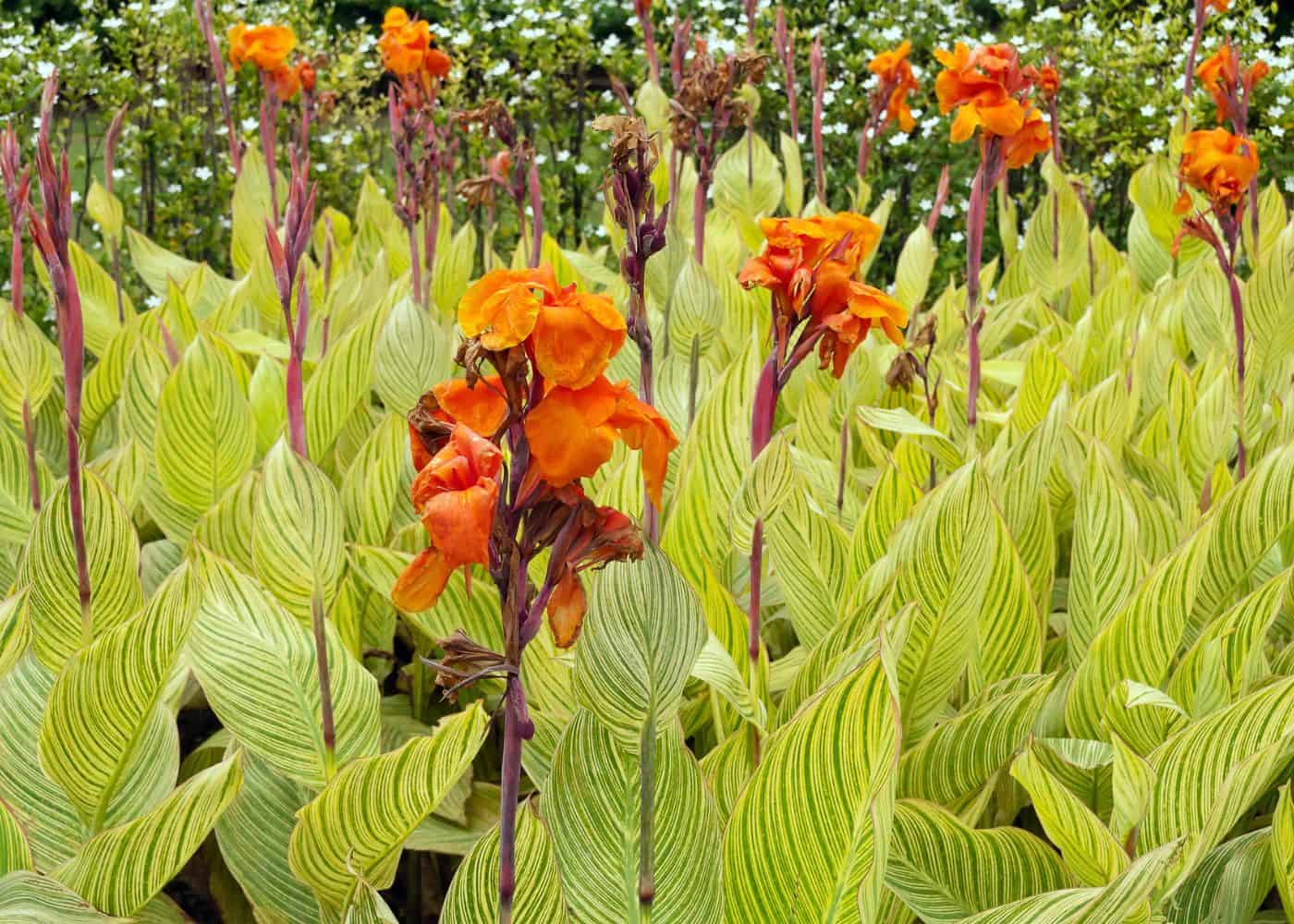
Fertilizing tips
Canna lilies can benefit from being fertilized with a balanced fertilizer once a month during the growing season. Follow the directions on the label, as over-fertilizing can burn the plant leaves.
For best results, choose a fertilizer that is specially formulated for flowers or blooming plants. These types of fertilizers are typically high in phosphorus, which can help to promote blooming.
With the right care and attention, canna lilies can be a stunning addition to any garden or landscape. Their showy leaves and bright flowers can bring an exotic touch of beauty that is sure to impress.
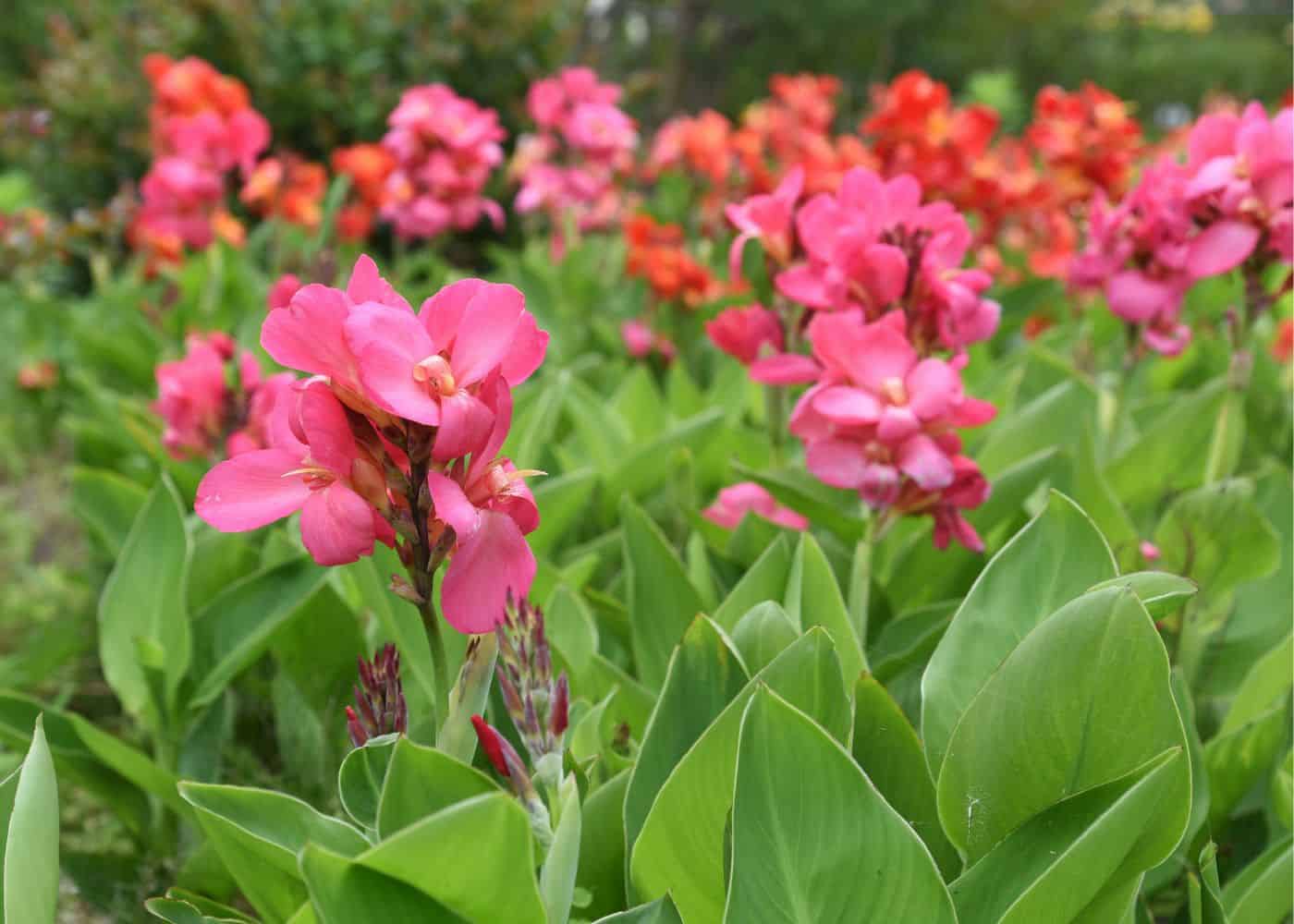
Pruning tips
Canna lilies can be pruned back to the ground in late fall or early winter when the foliage and flowers are done blooming. Cannas need to be dug up and stored in mild temperatures where winters are cold.
Do not prune canna lilies during the summer months as this can cause them to lose vigor and can increase the chances of disease. If your canna lilies are in need of a trim, wait until after they have finished flowering and then cut them back This will help keep the plants neat and tidy and can also encourage new growth.
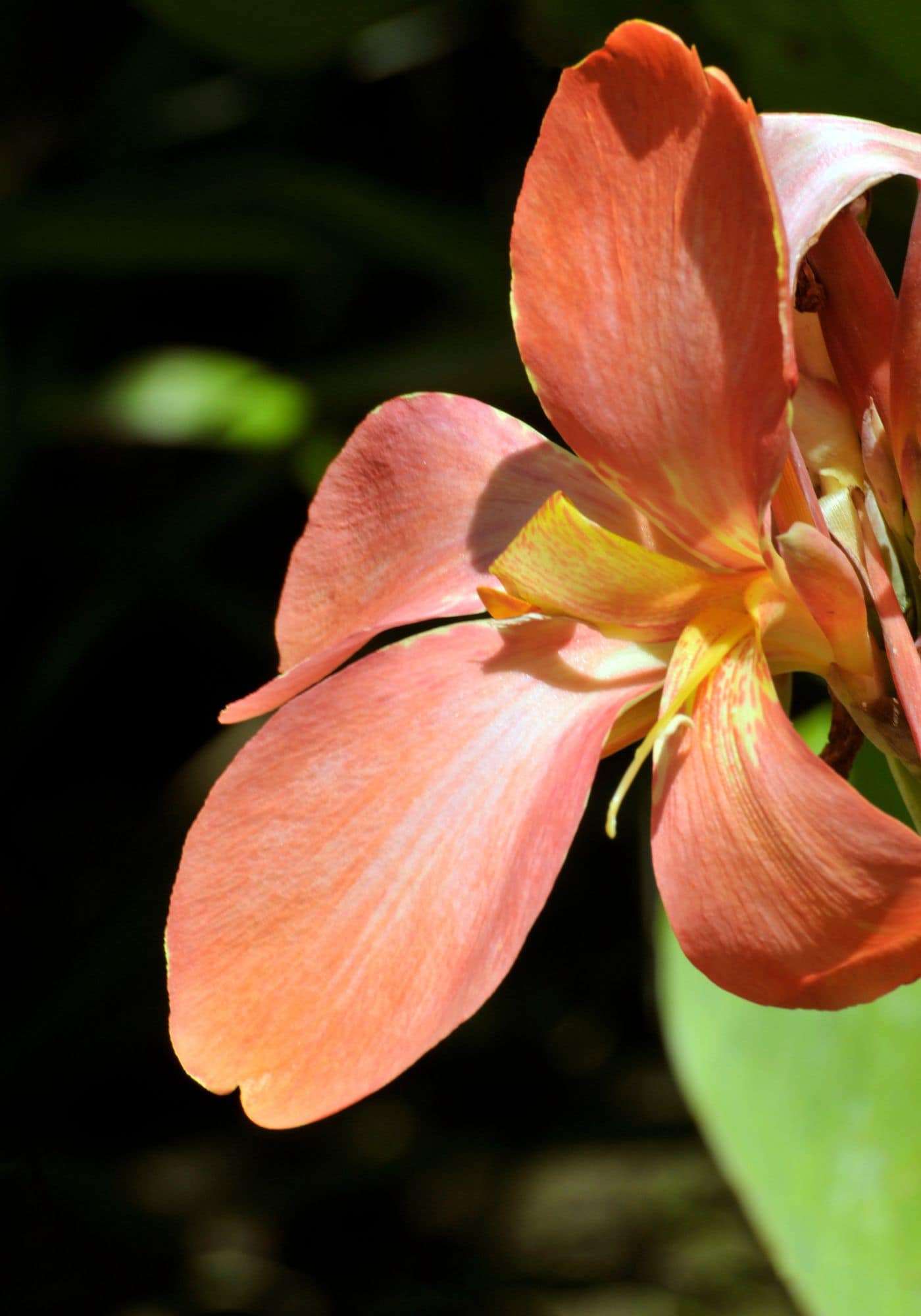
Garden ideas with canna lilies
Canna lilies can be used to add a tropical touch to any garden. They can be planted in large containers, mixed beds, or as a backdrop for other plants.
These beautiful flowers can be combined with contrasting foliage and colorful blooms to create an exotic and eye-catching display. Cannas can also be grown along walks or paths to create a beautiful and inviting path for guests.
No matter how you choose to use canna lilies, they can really bring an extra bit of life and beauty to any garden or landscape. With the right care and attention, these stunning plants can reward you with their vibrant blooms for many years to come.
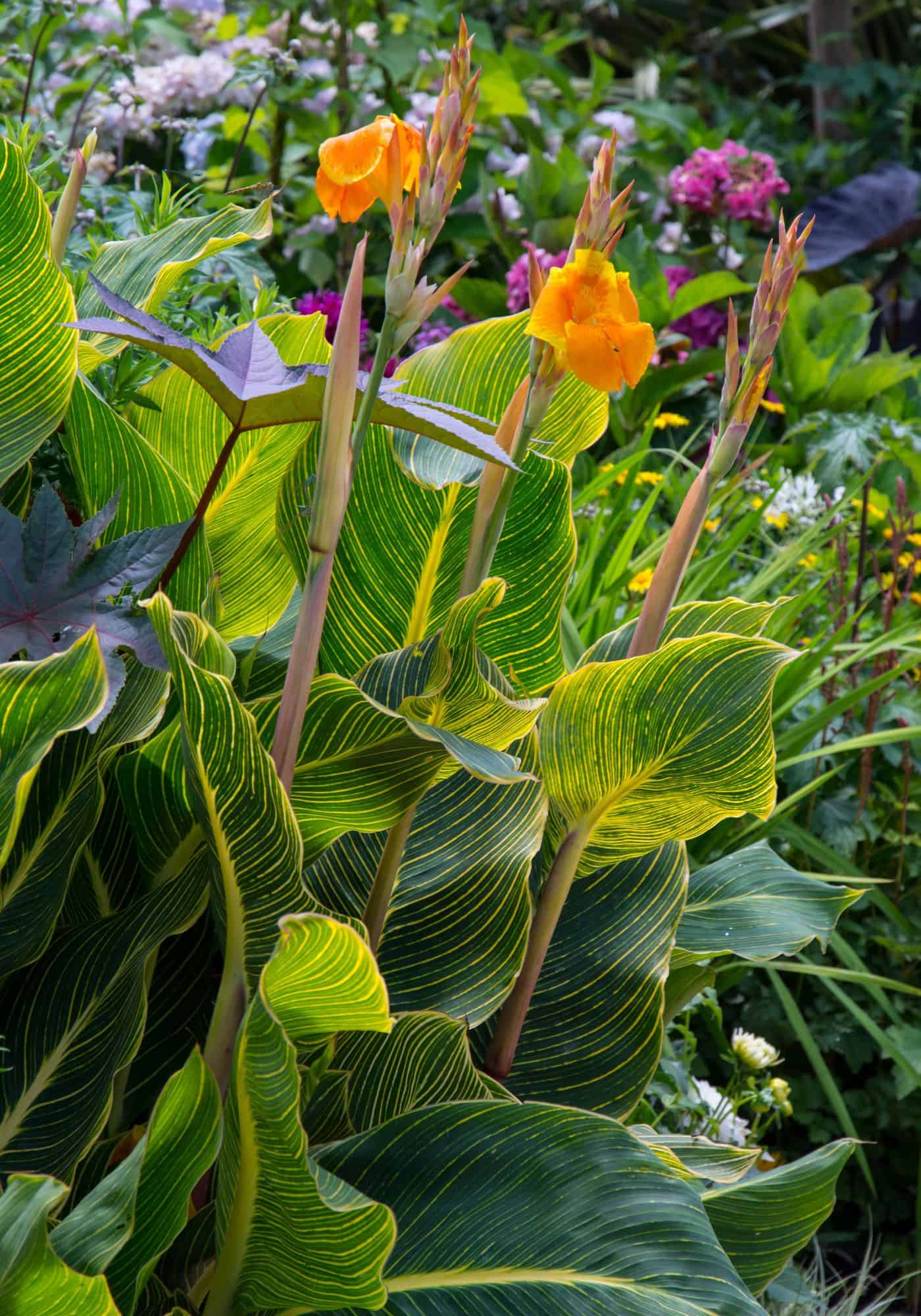
Digging up and storing canna lily roots
Canna lily roots do not survive being frozen and need to be dug up and brought indoors when grown in freezing climates. A frost will usually only kill the aboveground portions, but a hard freeze of the ground can kill the roots as well.
To dig up canna lily roots, wait until after the foliage has died back in late fall. Using a shovel, carefully dig around the canna lily roots to loosen them from the soil. It can be surprising how much the roots have grown since they were planted in the spring!
Once they are dug up, canna lily roots can be stored in a dry, cool area such as an attic or basement. Make sure to check on them periodically throughout the winter months.
When spring arrives, canna lilies can then be replanted outside again. Just make sure that any threat of frost has passed before putting them back in the soil. With proper care and attention, canna lilies can bring a touch of beauty to any garden for many years to come!
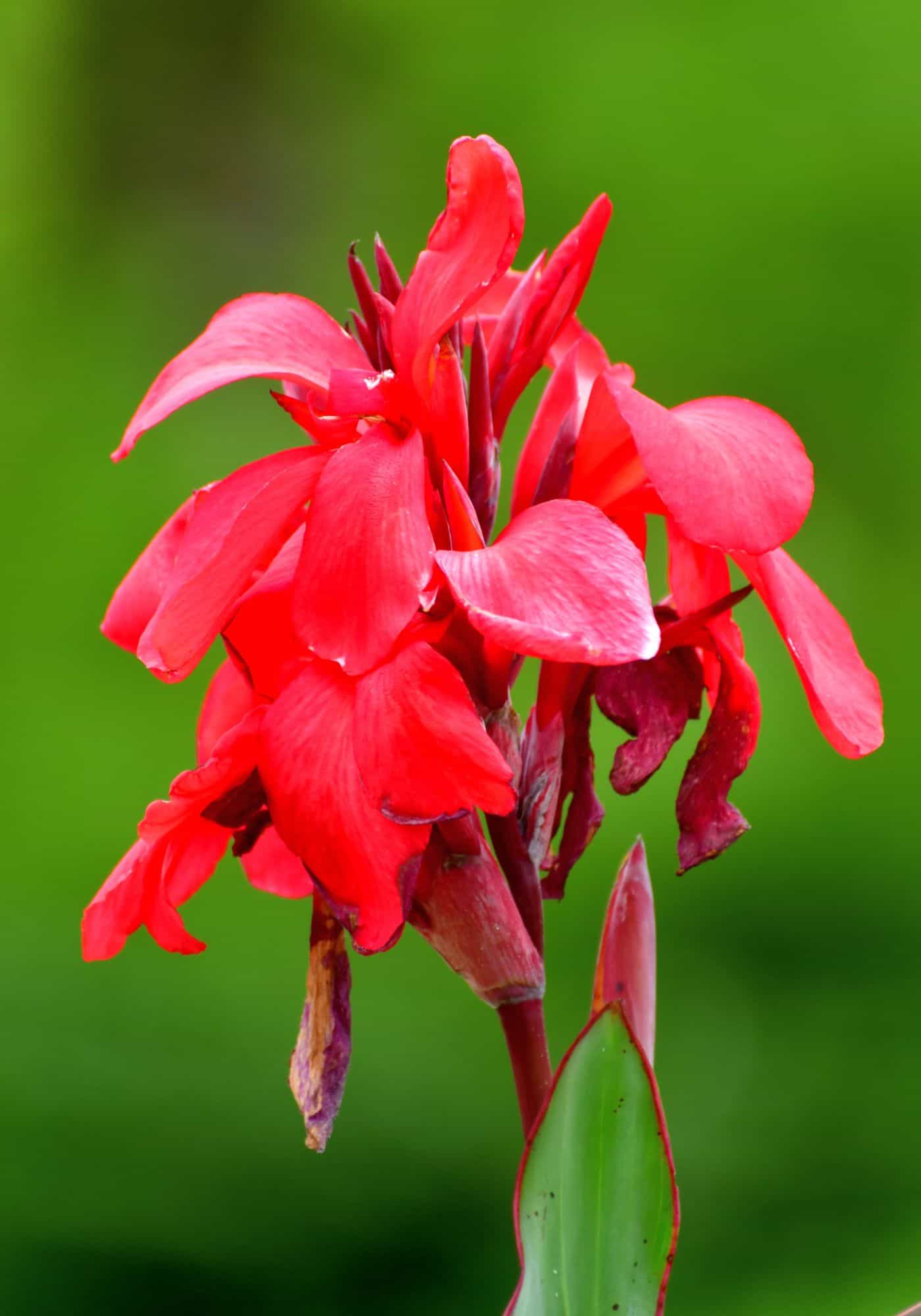
FAQs about growing canna lilies
How much sunlight do canna lilies need?
Canna lilies prefer full sun but are tolerant of partial shade. They require at least 6 hours of direct sunlight per day to flower at their best. If grown in too much shade, the plants will be less vigorous and produce fewer flowers.
How do I propagate canna lilies?
Canna lilies can be propagated by dividing the rhizomes or by seed. Dividing the roots is the easiest way. Carefully dig up the rhizomes and separate them with a sharp knife. Each division should have at least two buds. Replant the divisions in well-drained soil and water them well.
Canna lilies can also be grown from seed. Sow the seeds in a seed tray filled with seed compost. Cover the seed with a fine layer of vermiculite and water well. Keep the tray at a temperature of 21-24C. Once seedlings are large enough to handle, transplant them into 7.5cm pots.
What is the ideal temperature range for growing canna lilies?
Canna lilies prefer warm temperatures and can tolerate high heat. They will grow best in temperatures between 70°-86°F (21°-30°C). They will not tolerate frost or freezing temperatures.
How do I prepare canna lilies for winter?
In areas where the ground freezes during winter, it is important to dig up the rhizomes before the first frost and store them in a cool, dry place. The rhizomes can be stored in a bed of peat moss or sawdust.
